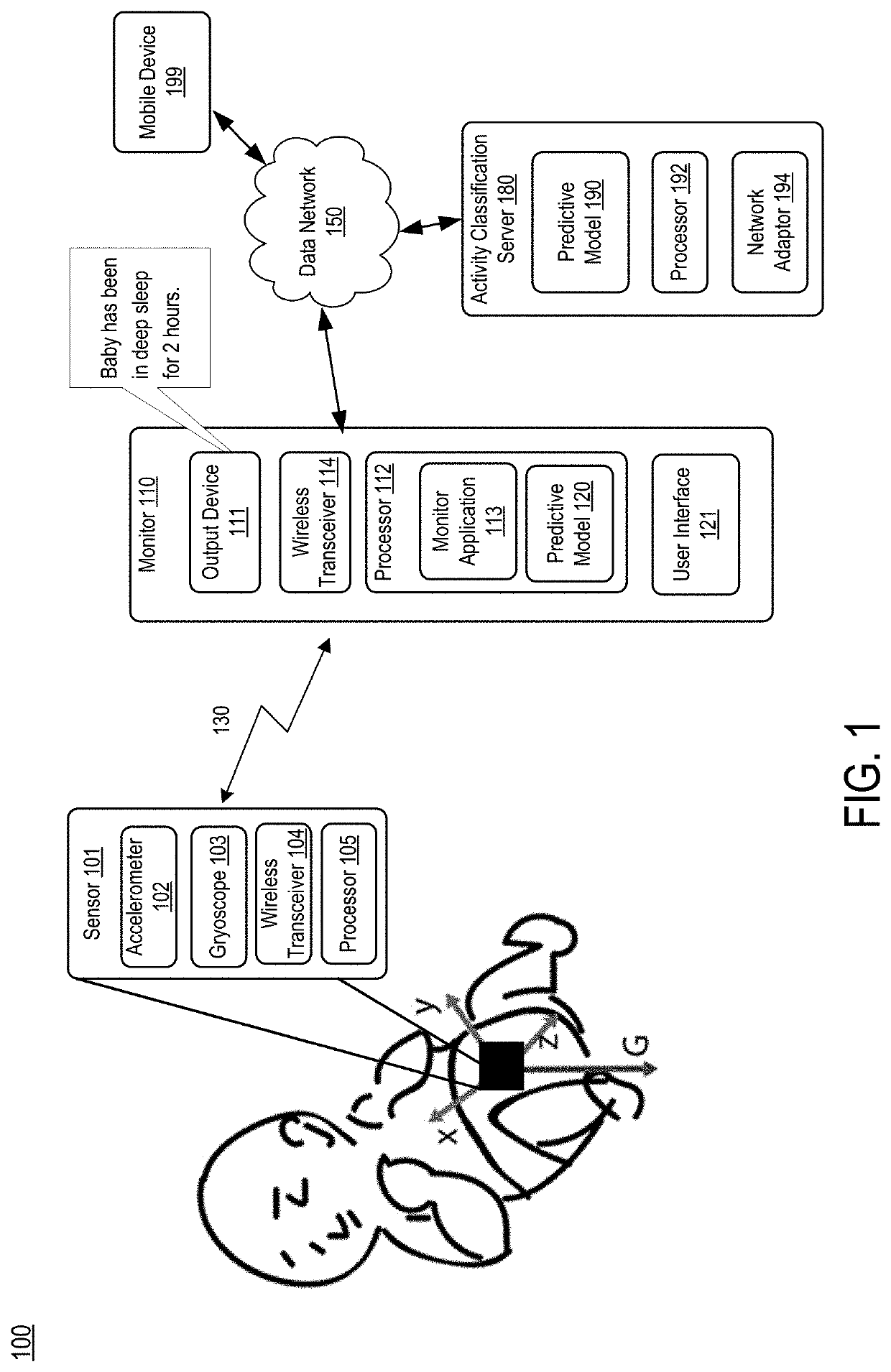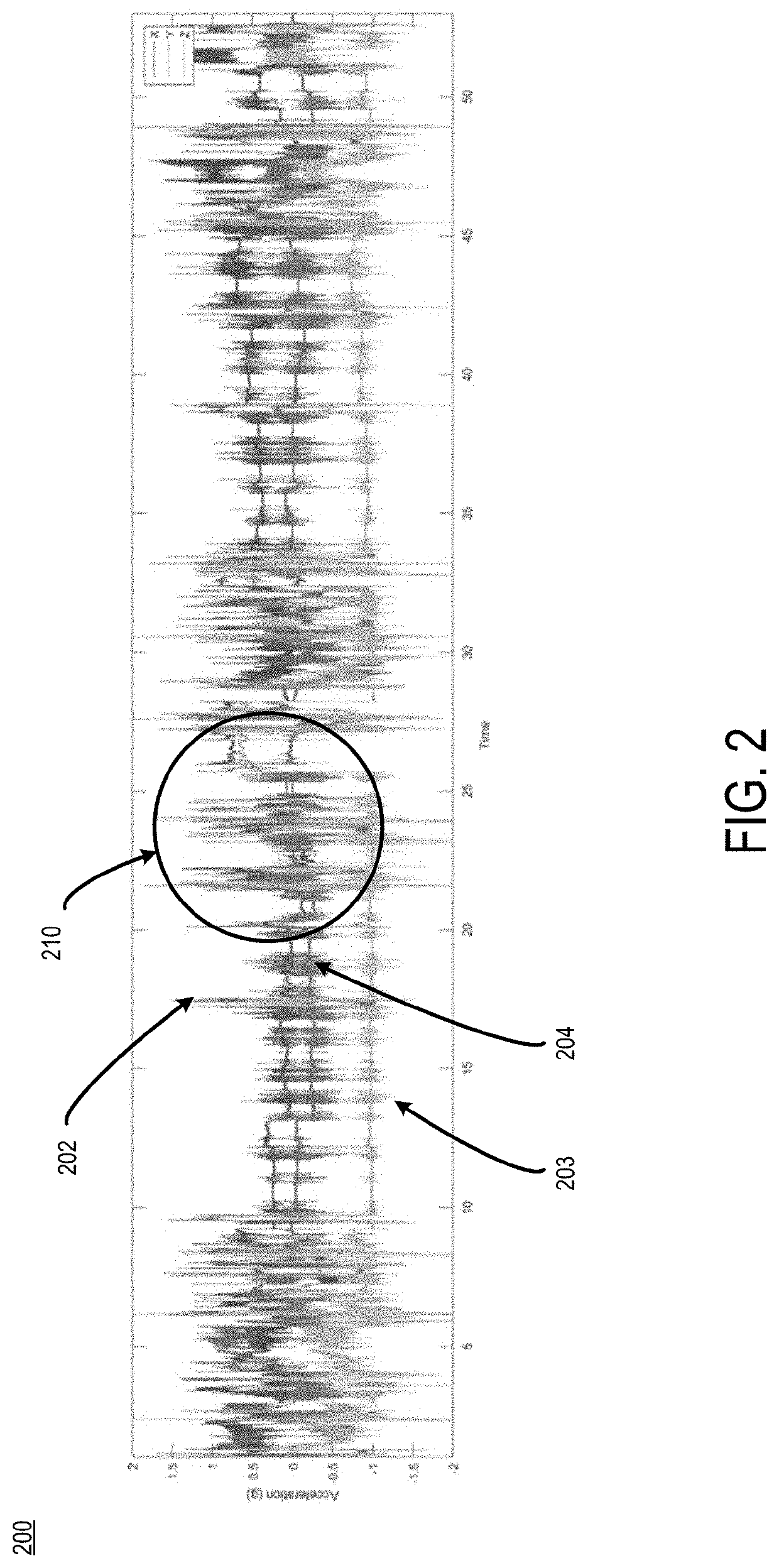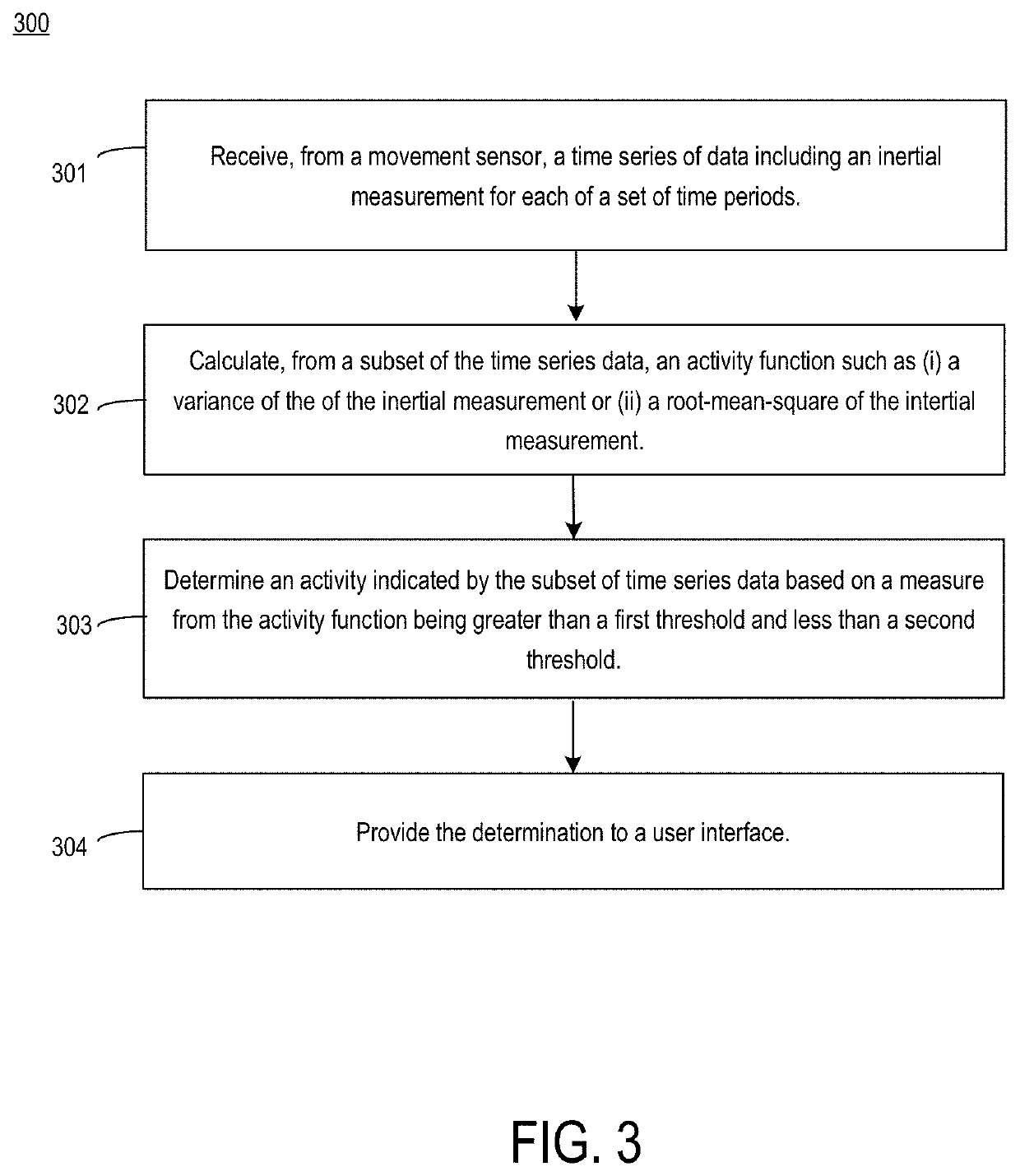Sensing and activity classification for infants
a technology for sensing and activity, applied in the field of electrochemical detection of activity, can solve the problems of inadequate infant monitoring solutions, and inability to adapt to infants' unique requirements, so as to reduce the value of loss function and minimize the effect of loss function
- Summary
- Abstract
- Description
- Claims
- Application Information
AI Technical Summary
Benefits of technology
Problems solved by technology
Method used
Image
Examples
Embodiment Construction
[0047]Aspects described herein provide solutions for activity classifications systems, specifically activity classification systems designed to detect the movement of an infant and determine whether the infant is performing a specific activity such as sleeping, feeding, nursing, or sitting up.
[0048]In an example, an activity classification system includes a movement sensor and an external monitor. The sensor is attached to an infant's clothing or an absorbent article such as a diaper. The sensor, which can include an accelerometer or a gyroscope, provides measurements to the monitor via a wireless communication channel. The monitor is an electronic device that can receive the measurements from the sensor and execute a monitor application and a predictive model such as a machine learning model, state-flow-model, or algorithm to determine activities performed by the infant. In this example, the predictive model is trained to determine, based on the infant's movement, an activity that ...
PUM
 Login to View More
Login to View More Abstract
Description
Claims
Application Information
 Login to View More
Login to View More - R&D
- Intellectual Property
- Life Sciences
- Materials
- Tech Scout
- Unparalleled Data Quality
- Higher Quality Content
- 60% Fewer Hallucinations
Browse by: Latest US Patents, China's latest patents, Technical Efficacy Thesaurus, Application Domain, Technology Topic, Popular Technical Reports.
© 2025 PatSnap. All rights reserved.Legal|Privacy policy|Modern Slavery Act Transparency Statement|Sitemap|About US| Contact US: help@patsnap.com



